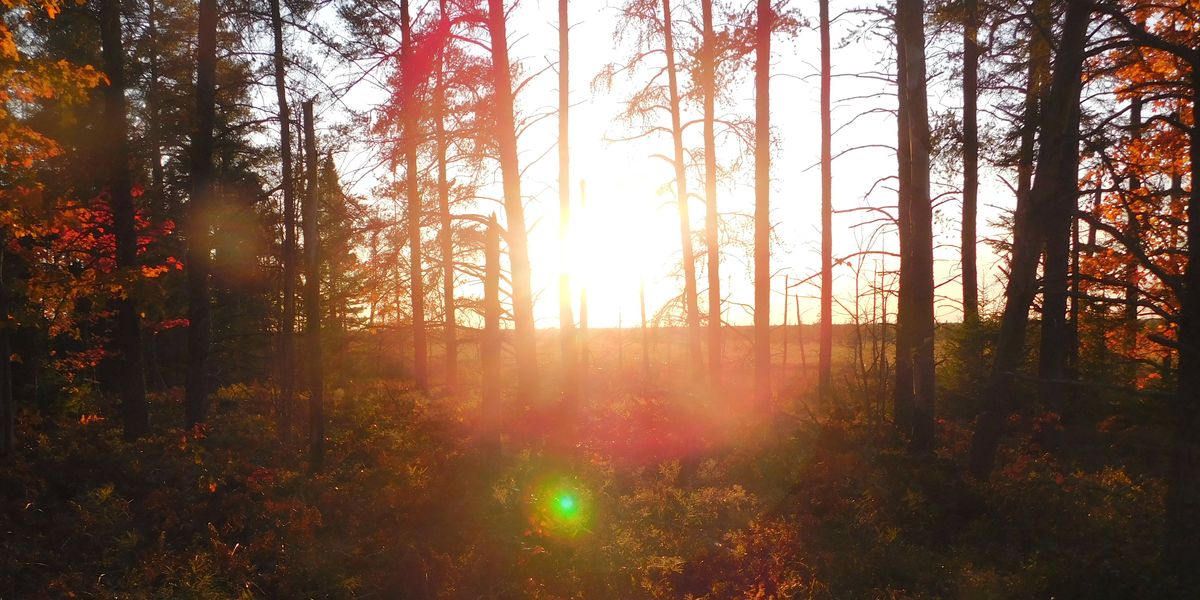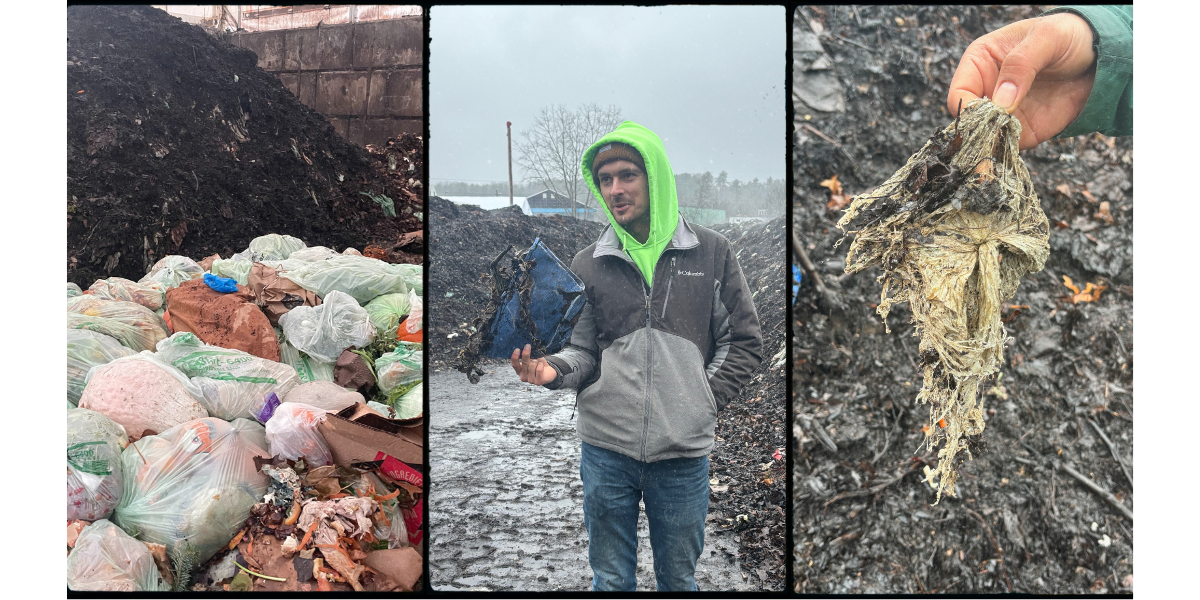
Bioplastics create a composting conundrum
Biodegradable food packaging is a step in the right direction, experts say, but when composted carries risks of microplastic and chemical contamination.
GROTON, Mass. — Steam billows inside Black Earth Compost’s processing facility as Syed Dong, regional operations manager, opens the building’s delivery door and lets in the chilly March air.
Inside, billions of bacteria are breaking down a big pile of food scraps, yard waste and compostable bioplastic packaging into water, carbon dioxide and compost, a nutrient-rich soil amendment.
“This is where we ignite the composting process,” Dong told Environmental Health News over the roar of machinery blowing air through the pile. Soon, his team will move the heap outdoors for further processing in windrows, long organic waste piles covered with leaves. After three months, the compost will be sold or distributed to farmers, landscapers, garden centers and residential customers.
Black Earth Compost is one of a growing number of industrial composters accepting compostable bioplastic packaging along with yard and food waste. Compostable packaging is derived from both plants, such as corn, sugarcane or bamboo, and petroleum products, and is designed to decompose under controlled conditions at a composting facility. It is a type of biodegradable bioplastic that’s a popular substitute for single-use plastics in the food industry, from cups, bowls and cutlery to wrappers, bottles, bags and take-out boxes. In theory, compostable food packaging helps cut plastics pollution and methane gas emissions from landfills by diverting food scraps to a composter and breaking down into a product that nourishes soil. Consumers are more likely to compost food waste if it’s tangled up with biodegradable plastic packaging or restaurant serviceware, experts say.
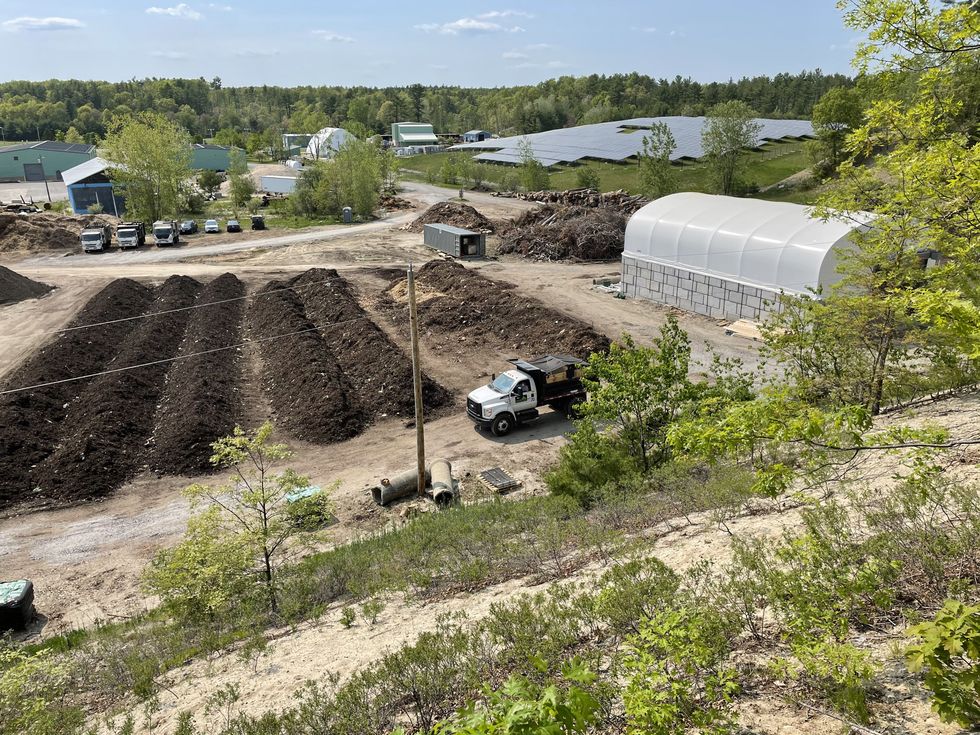
Black Earth Compost facility in Groton Massachusetts.
Credit: Syed Dong
“If packaging touches food, it really should be compostable if you can't have it [be] reusable,” Frank Franciosi, executive director of U.S. Compost Council, told EHN, citing plastic’s abysmal 5 to 6% recycling rate and the oft-quoted figure that if global food waste were a country, it would produce one-third of greenhouse gas emissions.
But our composting infrastructure isn’t ready to handle bioplastic packaging. We do not have guardrails for ensuring that materials are truly compostable and safe for recycling back into soils. Consequently, traditional plastics often contaminate compost while truly compostable materials often rot in a landfill. Additionally, the potential for compostable packaging to leave behind microplastics and chemical additives that could harm soil ecosystems, or be taken up by crops, isn’t well researched.
Contamination from traditional plastics or materials misleadingly labeled as biodegradable, makes it tougher to evaluate the safety and efficacy of composting bioplastic packaging. It also makes it economically more difficult for industrial composters to thrive.
“These early generation [bioplastic] alternatives are very imperfect, but from our perspective, redesigning packaging is the right direction. I just don't think we're there yet in terms of really having cracked that nut,” Eric Roy, an assistant professor of environmental sciences at the University of Vermont, told EHN.
Composting packaging materials
Composting is nature’s process for recycling organic matter into fertilizer. Industrial composters use temperature, moisture and aeration and hone their feedstock mix to enhance the process. Operators range from small community composters that process waste in windrows to large facilities equipped with forced air and biofilters to capture smelly emissions.
Over the last decade, food waste collection has become more common and so has the collection of compostable packaging. More sophisticated operations are more likely to take compostable bioplastics, as evidence suggests they can decompose packaging better, Linda Norris-Waldt, deputy director of the U.S. Compost Council, told EHN.
“If packaging touches food, it really should be compostable if you can't have it [be] reusable.” - Frank Franciosi, executive director of U.S. Compost Council
Black Earth Compost operates three small facilities and began accepting food packaging when it realized compostable bags were vital for food scrap collection, Andrew Brousseau, compost operations manager at Black Earth Compost, told EHN. “Early on, we felt [compostable packaging] was a great solution to single use plastic,” he said. “Our stance is that reusable should be used where possible and where that's not possible… it should be compostable.”
Food scraps bring additional nutrients to compost, which benefit the soil, while the compostable packaging helps with collection of the scraps, is a carbon source for the compost and creates structure and air spaces in the pile, Brousseau said.
Black Earth Compost takes only packaging that is certified compostable by the Biodegradable Products Institute (BPI), OK Compost, or the Compost Manufacturing Alliance. These voluntary certifications require manufacturers to meet criteria for breaking down within 12 weeks at an industrial compost facility, as well as be PFAS-free and pass a soil ecotoxicity test. Even so, vestiges of plastic contamination poke out from the windrows at Black Earth Compost—a clear Dunkin Donuts cup, bright blue flowerpots and numerous pale green garbage bags.
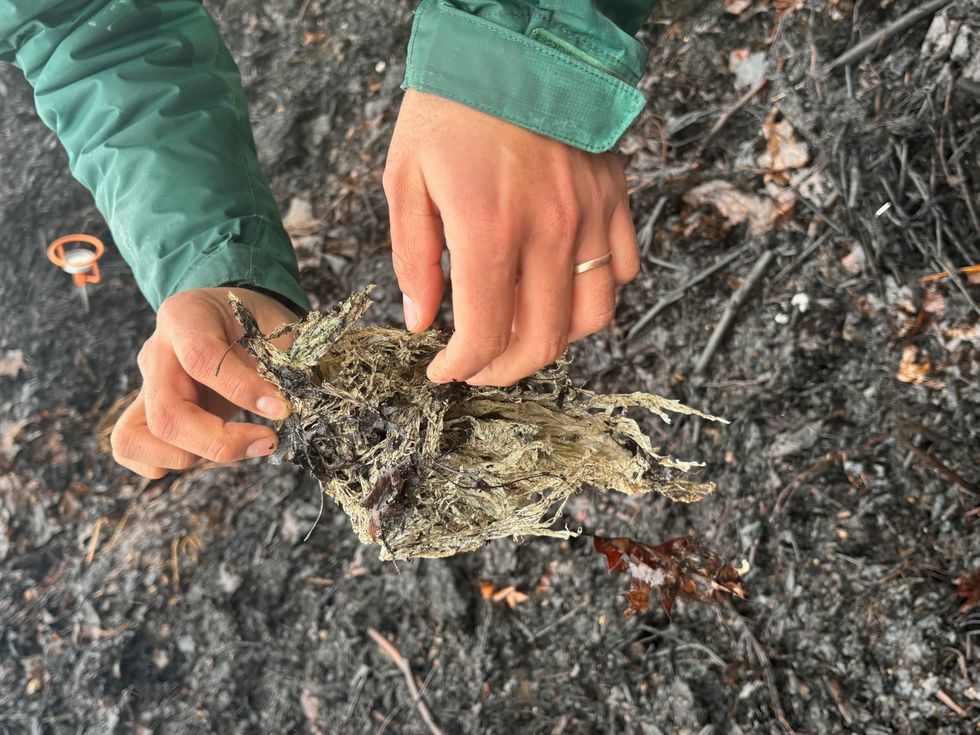
Syed Dong demonstrates what a certified compostable garbage bag looks like after roughly one month of decomposing
Credit: Meg Wilcox
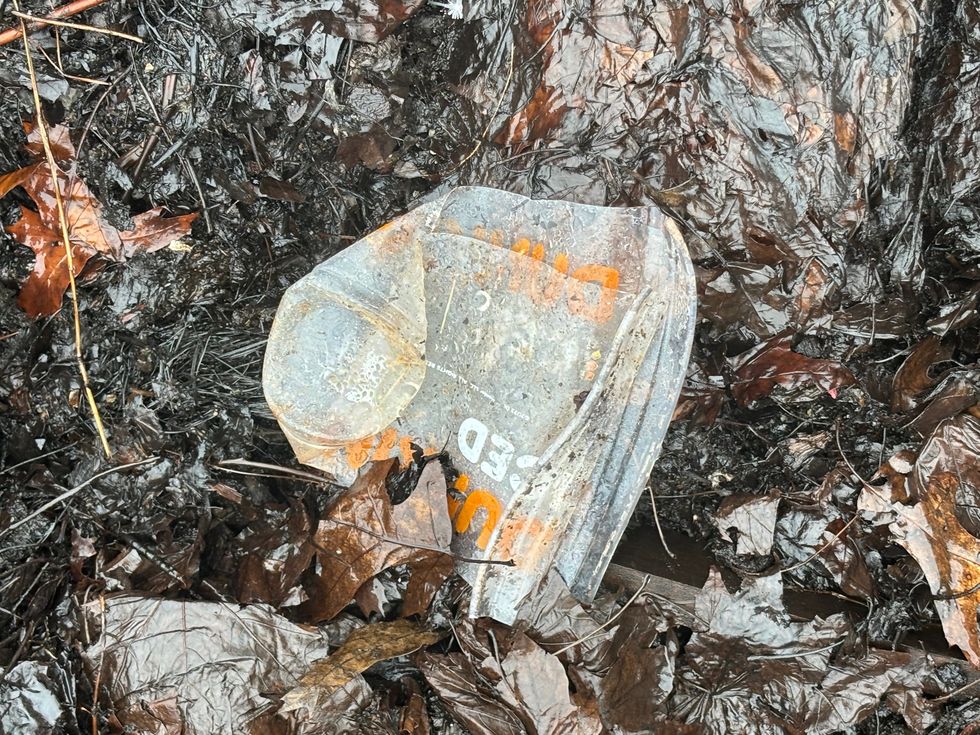
Plastic contamination at Black Earth Compost facility.
Credit: Meg Wilcox
Lifting a garbage bag shredded and riddled with holes, Dong said, “This one’s compostable.” But the Dunkin Donut’s cup and flowerpots? Not so much. More troubling are look-alike green garbage bags that are fully intact. These look-alike products are designed to mimic their compostable counterparts and it’s impossible for Black Earth Compost’s drivers to tell the difference, said Dong.
Fraudulent marketing of these materials as “biodegradable” or “plant-based” is rampant and confusing, Brousseau said.
The U.S. Compost Council and BPI last year created principles to model legislation for labeling and testing compostable products to deal with the problem. Thus far, only Colorado, California and Washington have passed laws.
“Our stance is that reusable should be used where possible and where that's not possible… it should be compostable.” - Andrew Brousseau, compost operations manager at Black Earth Compost
Removing plastic items from compost production is a never-ending job at Black Earth Compost. It starts with educating customers and pick-up drivers and ends with the use of specialized fans for sucking out remaining plastic contamination, with a lot of labor-intensive hand sorting in between.
A recent study by the Composting Consortium found that 21% of composters’ operating costs are spent on removing contaminants, the majority of which are traditional plastics. But they also found that plastics contamination was a problem regardless of whether a facility accepted compostable packaging.
“It’s the intrinsic nature of what we're doing as recyclers,” Brousseau said.
Do compostable bioplastics really break down?
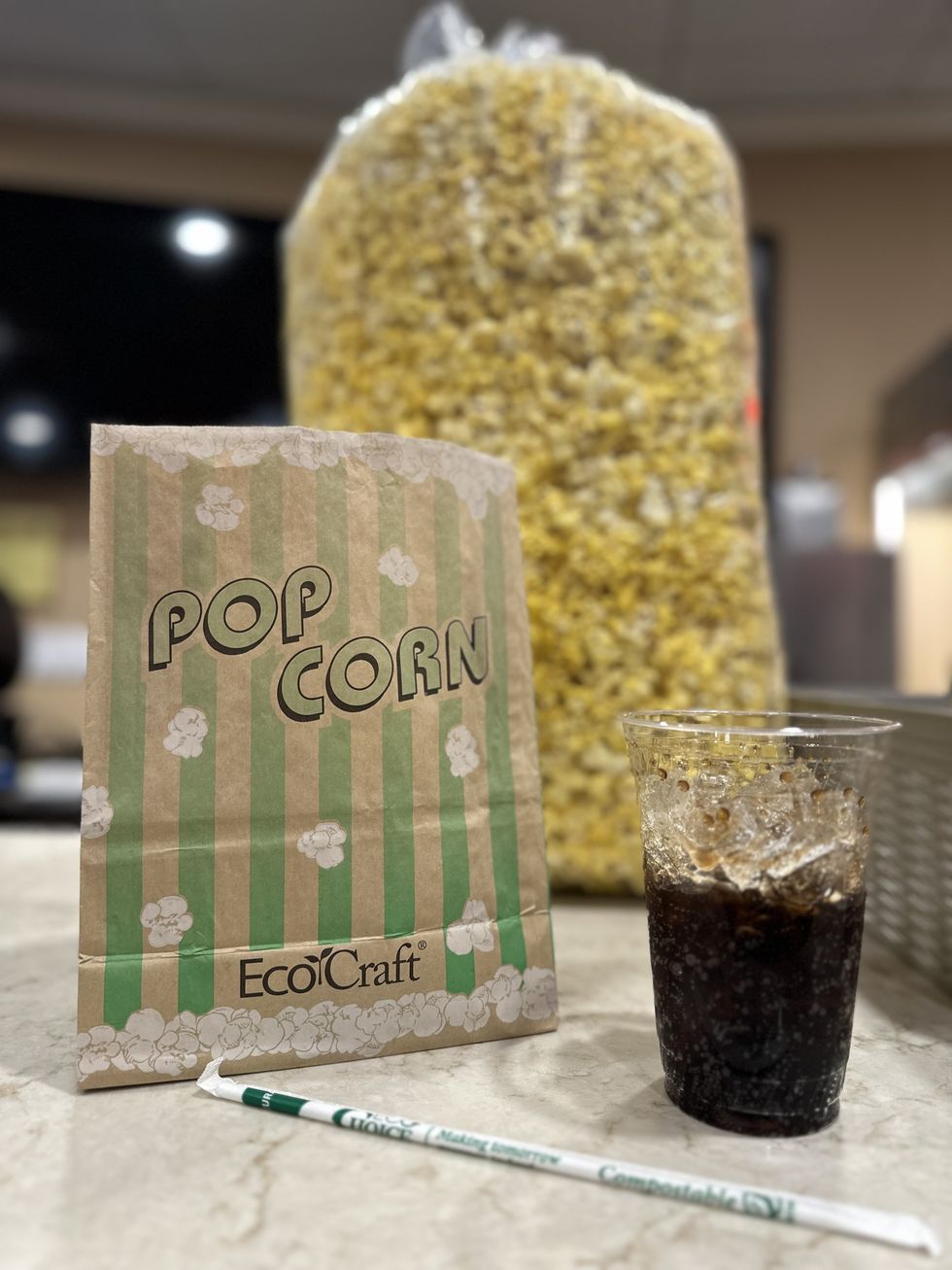
Examples of some of the certified compostable materials that Black Earth Compost accepts from its customer, Cabot Theater in Beverly, Massachusetts. The theater composts all popcorn bags, cups, straws and napkins and recycles. All drinks are served in compostable cups.
Credit: Lisa Champigny
While some report that compostable items like cutlery don’t break down well, the Composting Consortium’s field study found that, for the most part, compostable packaging does fully decompose at industrial facilities. Eight of nine composters studied that accepted compostable packaging had no detectable amounts of the materials in their finished compost.
“When [compost] piles have optimum conditions with the best management practices, bioplastics by and large break down very well,” Rhodes Yepsen, an executive director at BPI and a member of the Composting Consortium, told EHN.
That’s Black Earth Compost’s experience. “After three months, there's no more compostable plastic,” Dong said. “Any plastic that you see past that point within the life of a pile, that's conventional plastic.”
However, in compost samples University of Vermont researchers studied, they found fragments of poly-lactic acid, or PLA, which is commonly used to make compostable packaging, and what appeared to be compostable bags but could have been look-alikes. Though they weren’t the majority of plastics found, they were “wellrepresented,” Kate Porterfield, a doctoral student at the University of Vermont, told EHN.
More troubling, the University of Vermont’s research found widespread microplastic contamination in compost materials, though that research didn’t distinguish whether the microplastics came from compostable or traditional plastic materials.
Roy said, “it's a tricky question” what happens to microplastics created by compostable materials.
“Theoretically, they will persist in the environment for a shorter amount of time than traditional plastics will,” and that’s a “good thing.” But there’s “some evidence that these materials are not necessarily entirely benign in the soil environment.”
Degradation of microplastics “all depends on what the polymer is, how it's put together and the environmental circumstances,” Richard Thompson, professor of marine biology and director of Plymouth University’s Marine Institute, told EHN.
Meanwhile, studies show that chemical additives or chemicals transported by microplastics, may be more concerning than the plastic polymers themselves, which complicates our understanding of risk. “All the combinations of polymer, additive, shape and size…each might have different effects in the soil environment,” Roy said.
That is perhaps why Franciosi said that, after PFAS, “microplastics are the next fire” for the compost industry.
PFAS and other chemicals
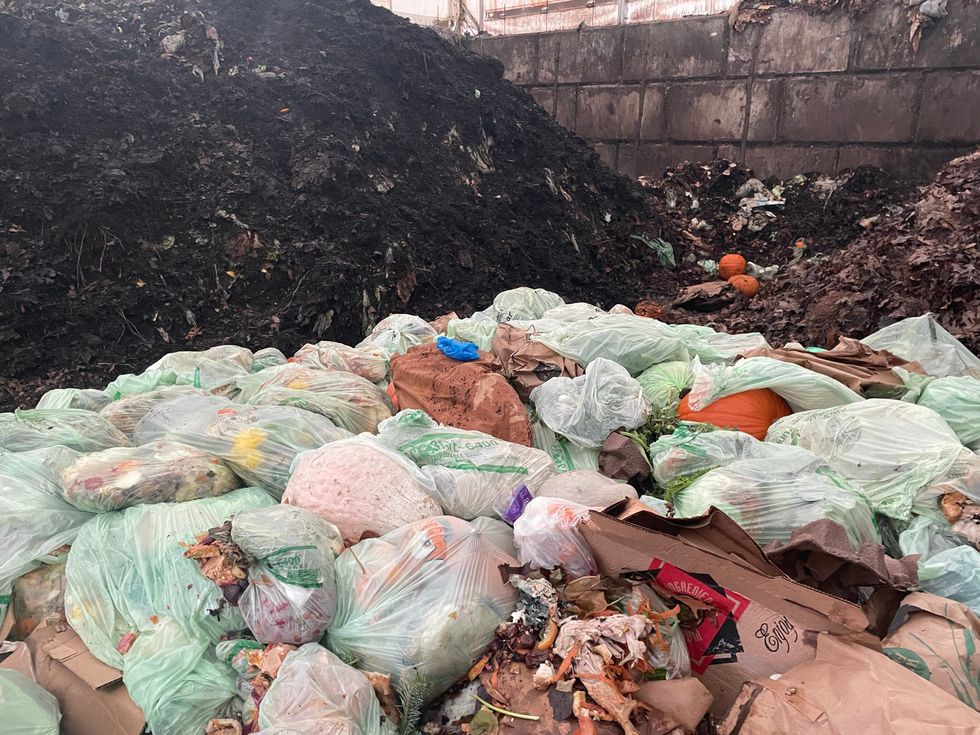
Food and yard waste delivery inside Black Earth Compost facility.
Credit: Syed Dong
PFAS used in coatings on food packaging have long been a concern for composters, but state actions to ban the chemical from food contact materials along with the Food and Drug Administration’s recent announcement that manufacturers will no longer use it on fiber-based food packaging may alleviate some concerns.
“I think [the FDA’s announcement] would have an enormous impact on really eliminating that source of PFAS into the compost,” David Andrews, senior scientist at the nonprofit Environmental Working Group, told EHN.
BPI’s certification test for PFAS adds another layer of protection for composters accepting only certified materials, although non-certified materials will continue to slip by.
“When [compost] piles have optimum conditions with the best management practices, bioplastics by and large break down very well.” - Rhodes Yepsen, an executive director at BPI
Little is known about the chemicals that are used in compostable bioplastics; however, one study found that many bioplastic materials were as toxic as their conventional counterparts. Certifying entities like BPI require compostable packaging to pass a soil ecotoxicity test that evaluates plant germination and biomass rates over several weeks. But that test may not be sufficient to evaluate the potential for harm, Roy said.
“It's a good test to include, but it's not necessarily the way to comprehensively screen a material for every potential effect on the soil,” he said. It doesn’t capture everything that might be happening within the soil environment, such as effects on microbial communities or effects that take longer to manifest.
In response, Yepsen said, “BPI is open to evaluating how studies might better capture factors like microbial communities and long-term effects.”
But the larger concern is that many manufacturers do not certify their compostable packaging materials and there are no laws requiring them to do so.
Future of bioplastics and compost
Research is needed to understand how quickly microplastics from compostable packaging may linger in soils, and whether they may release chemical additives that could harm soil life.
While Roy said it will be difficult to eliminate microplastics, they can be reduced by reducing unnecessary packaging, setting policies that test for and limit plastic contamination in compost, educating the public and innovating in packaging materials that are free of harmful chemical additives, degrade quickly and have proven not to pose a risk to soil organisms or plants.
Additionally, the U.S. composting infrastructure needs significant investment. Nearly three-quarters of Americans don’t have access to composting services and much of compostable food packaging ends up in peoples’ homes and ultimately in a landfill or incinerator. The proposed federal Compost Act would provide funds for composting infrastructure, Franciosi said. Extended producer responsibility laws that require packaging manufacturers to invest in recovery systems could also help fund these facilities.
Meanwhile, back at Black Earth Compost, Brousseau envisions scaling up to a decentralized network of small compost facilities, each serving ten Massachusetts communities, and a future where food packaging is largely compostable. “Imagine the peanut butter jar, bag of oysters, cheese block wrapping … you don’t have to clean it and maybe have it recycled. You can toss it in the bin, get it recycled locally and support your regional food system.”


